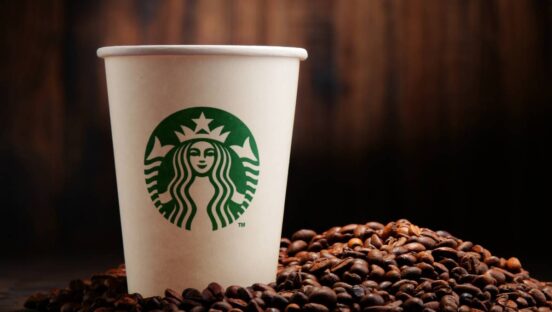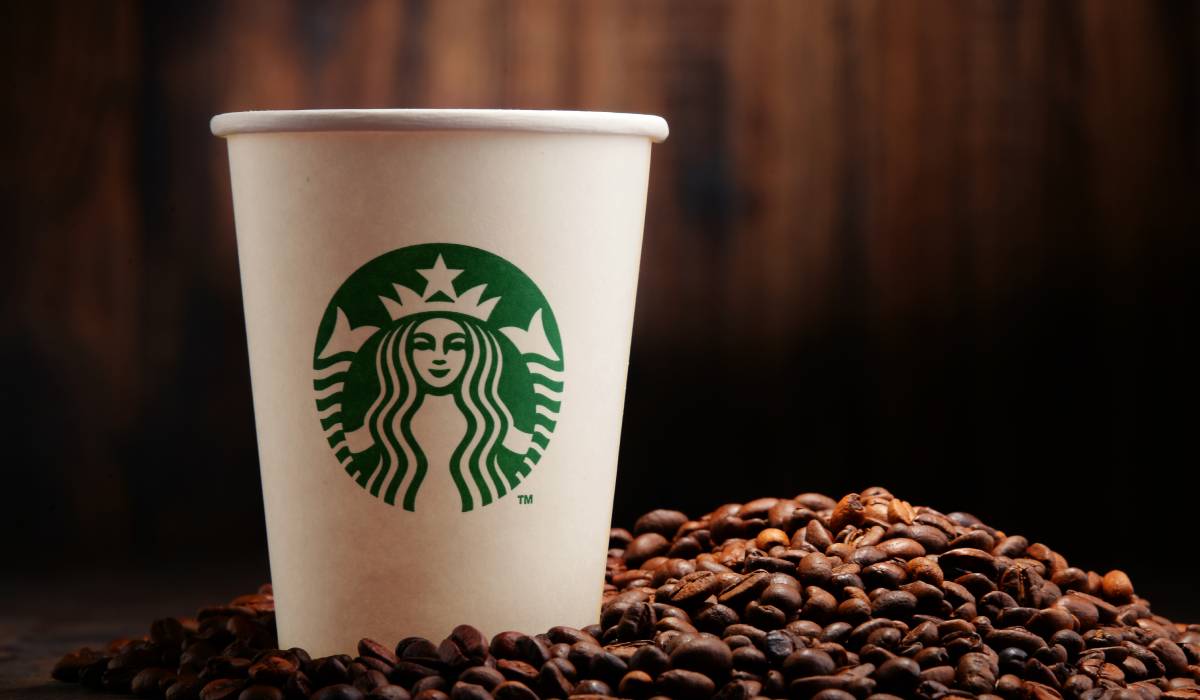Despite financial coaches telling consumers to skip their morning coffee runs to save a couple bucks, the demand for drive-thru java continues to rise. (It helps when you’re selling a product with addictive properties like caffeine).
Starbucks, the largest coffee chain in the world with nearly 36,000 stores, reached a historic high of $8.4 billion consolidated revenue in the fourth quarter, up 11 percent from last year. The company also experienced more foot traffic than the wider coffee segment this year.
With 15,878 stores in the U.S, Starbucks grew its unique customer base 9 percent year-over-year and increased Starbucks Rewards membership 16 percent to 28.7 million members. Starbucks can thank Gen Z for a large portion of that boost, who have “significantly more discretionary money” and “predictable” loyalty to the Seattle-based coffee brand, Starbucks Interim-CEO Howard Schultz said.
In Q4, which ended October 2 for Starbucks, same-store sales rose by 7 percent globally and 11 percent in the U.S., driven primarily by an 8 percent increase in average ticket sales, including an 18 percent increase in food sales in North America.
Meanwhile, international comps dropped 5 percent, driven by the same percentage decline in comp transactions and a 1 percent decline in average ticket sales.
Despite increasing prices nearly 6 percent over the last year, consumers aren’t recoiling. “We haven’t seen the loyalty and the transactions abate,” Schultz told investors on the Q4 earnings call Thursday.
He noted customization options help to drive ticket sales up. “And the ticket is becoming more accretive as a result of the modifiers, and those modifiers seem to be more consistent and greater with cold beverages, which is now over 75 percent of the U.S. business,” Schultz said.
Starbucks opened 763 new stores in Q4, ending the year with 35,711 stores in 83 countries—comprising 51 percent company-owned units and 49 percent licensed units. China surpassed 6,000 stores.
In 2022 overall, Starbucks grew global revenues to a record $32.3 billion, a 13 percent gain over last year. U.S. net revenues were up 15 percent year-over-year to $6.1 billion.
“Our strong performance in the quarter and year is particularly gratifying, in that it underscores the relevance of the Starbucks brand and the strength of our relationships with our customers around the world in the face of these unprecedented challenges,” Schultz told investors.
The brand’s performance also bolsters its confidence “in the ambitious growth agenda we announced in September, in which we will be adding roughly eight new stores per day, delivering best-in-class returns around the world every day for the next three years, bringing us to nearly 45,000 stores globally by the end of fiscal 2025,” Schultz said.
READ MORE:
Starbucks to Open 23,000-Square-Foot Store in Empire State Building
Starbucks in Creating a “Digital Third Place,’ Complete with NFTs
Starbucks Asks NLRB to Suspend All Union Elections
The coffee chain’s recently launched “Reinvention Plan” is already proving to have a measurable positive impact on business and operations, most notably for partner retention, increased speed of service, and elevating the customer experience, Schultz added.
As previously reported, Starbucks revealed plans to spend $450 million on its “reinvention,” which includes investing in new equipment designed for better efficiency and simplicity. The capital injection will begin in Starbucks’ fiscal 2023 calendar and extend into 2024 and 2025, with goals to reach 55,000 stores by the end of 2030.
“Reinvention investments will make it easier for our partners to do their jobs, better enable partners to satisfy growing demand in our stores, and provide greater opportunity for our partners to engage with our customers,” Schultz said in the Q4 earnings call.
“And I’m particularly pleased that reinvention investments are bringing coffee excellence, coffee craft and joy, and a little bit of love back into being a Starbucks barista,” he noted.
An emphasis on cold beverages in the fourth quarter strengthened customization and high-margin beverage flavor modifiers at Starbucks. Cold coffee beverages now account for 76 percent of total beverage sales in U.S. company-operated cafes, Schultz highlighted, and the brand’s iconic pumpkin spice seasonal lineup of drinks saw a 17 percent sales surge this year over 2021.
Consolidated operating margins in Q4 contracted 380 basis points from the prior year to 15.1 percent, primarily driven by investments in growth in labor, Rachel Ruggeri, Starbucks executive vice president and chief financial officer, told investors on the earnings call. Those investments include “enhanced store partner wages and new partner training, part of which were investments under our reinvention plan.”
A few other noteworthy numbers:
Mobile order and pay and delivery drove 72 percent of Starbucks’ total sales volume in North America, with delivery accounting for more than 4 percent of sales—up 35 percent year over year.
Starbucks Rewards members drove a record 55 percent of sales in the company’s U.S. stores in Q4.
In its Channels business and partnership with Global Coffee Alliance with Nestle, revenues increased 18 percent to $484 million in Q4, totaling $1.8 billion for 2022.










